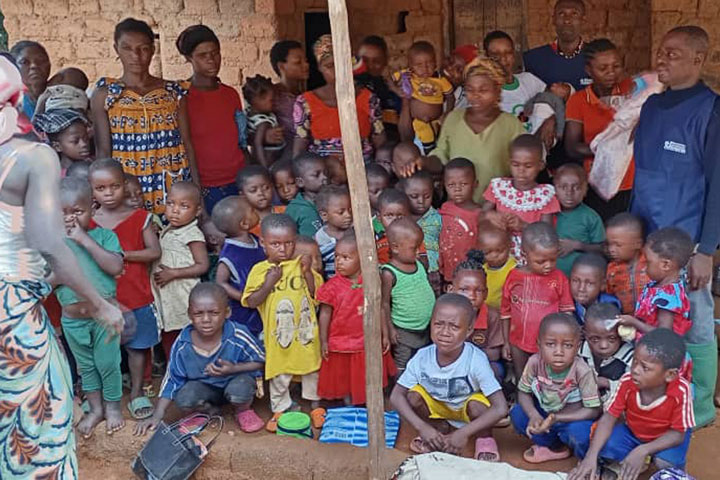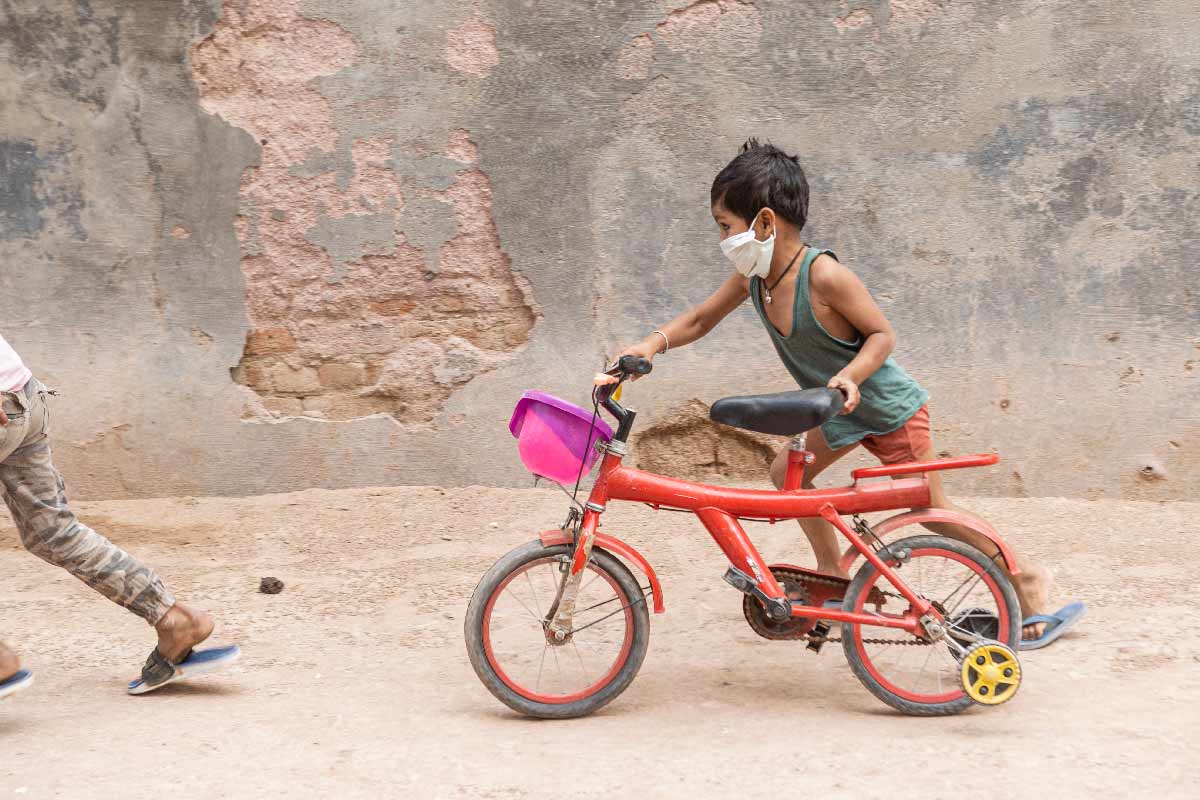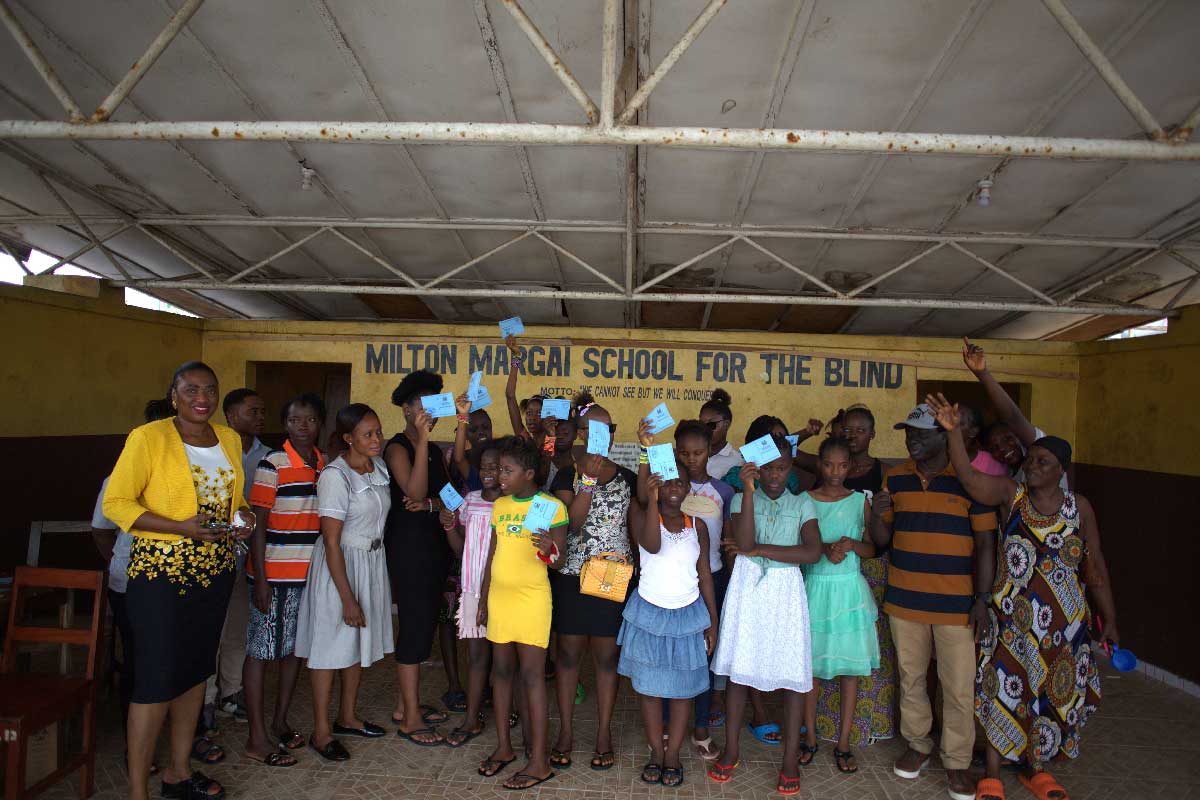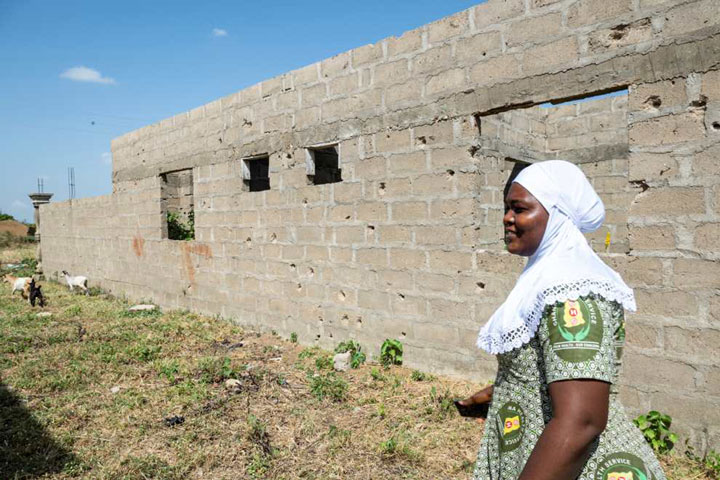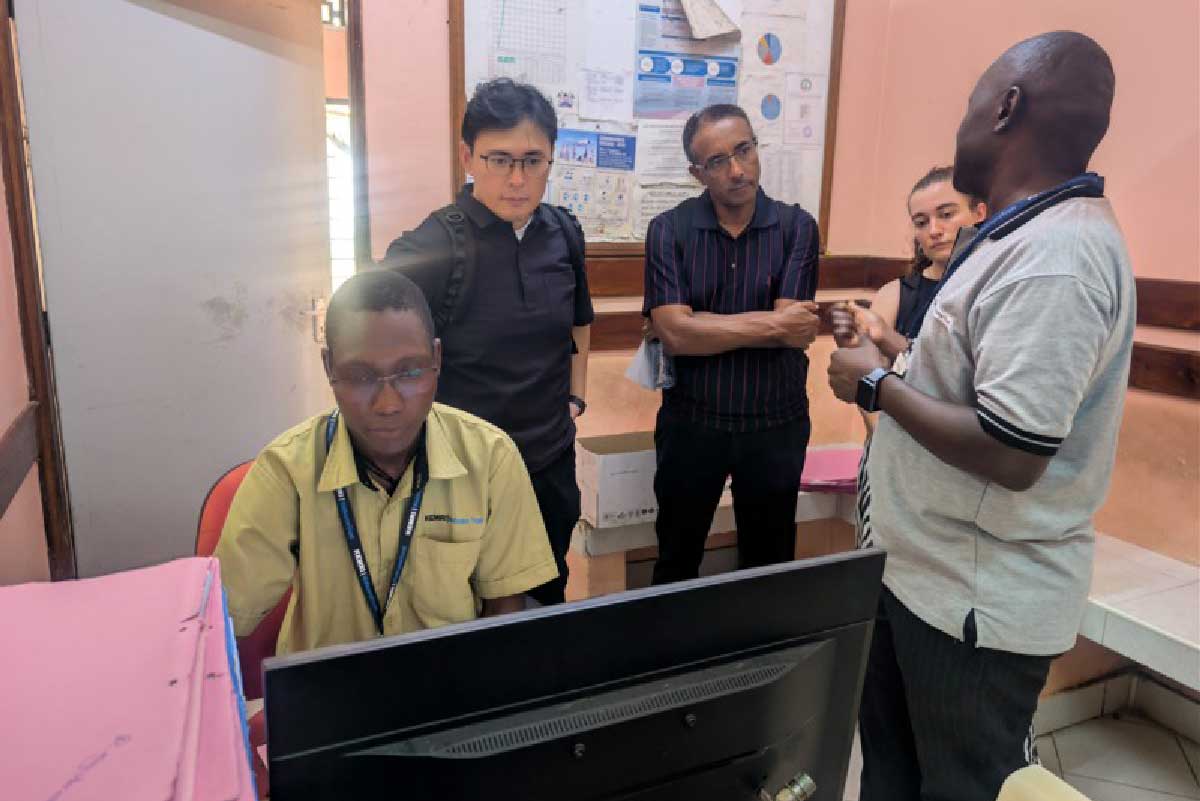No signal, no problem: the Cameroon health workers drumming up support for vaccination
A pre-digital communication network is bypassing broken telecoms lines and broken trust.
- 15 October 2025
- 5 min read
- by Delphine Fri Chifor
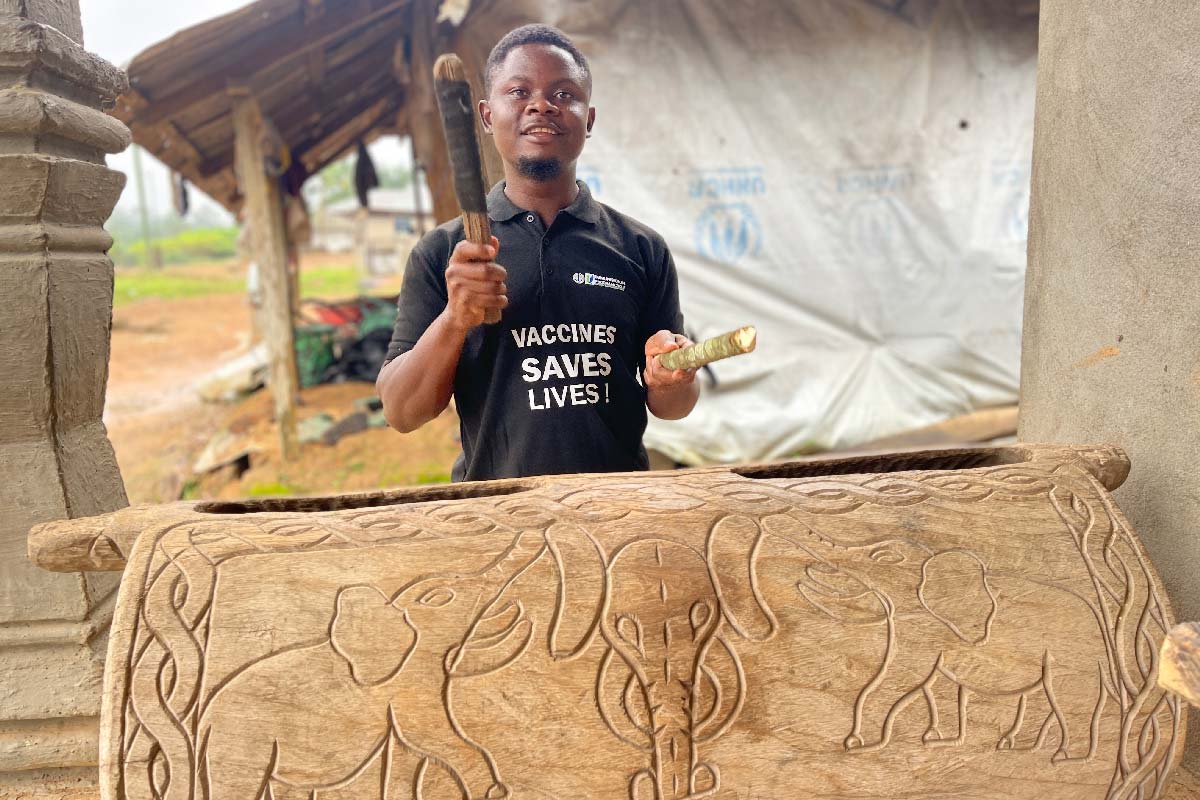
In parts of conflict-dogged Northwest and Southwest Cameroon, local radio and television stations have long since gone off the air. Smartphones are restricted to a privileged few, and the regular telecommunications network is unreliable.
For health workers in the districts of Ako, Ekondo-titi, Fontem and Nwa that makes explaining the importance of vaccination to the population challenging.
Here, what may present as vaccine hesitancy is typically not an outright rejection of vaccines, but a lack of basic knowledge – what is a vaccine, and what does it do? Which vaccines symbolise vaccine completion for a child? If a child misses a dose, can the child catch up? Can they trust the people bringing the vaccine?
Not having answers to these questions creates room for speculation, and that, in turn, leaves communities vulnerable to health mis- and disinformation. Even the hollowest claims can be enough to dissuade caregivers from vaccinating their children. Doubt can spread like a pathogen.
“When you sample opinions of caregivers who refuse to vaccinate their children, you realise the reasons are diverse,” explained Mufu Kelvin, Cameroon Baptist Convention Health Services (CBCHS) District Officer for Nguti and Konye health districts. “They range from fears of adverse effects, social norms reinforced by the community, mistrust fuelled by the crisis, to personal convictions.”
Listening to people is important, Kelvin adds. Understanding parents’ perspectives is the only way outreach workers can make sure their communications efforts actually address household and community concerns.
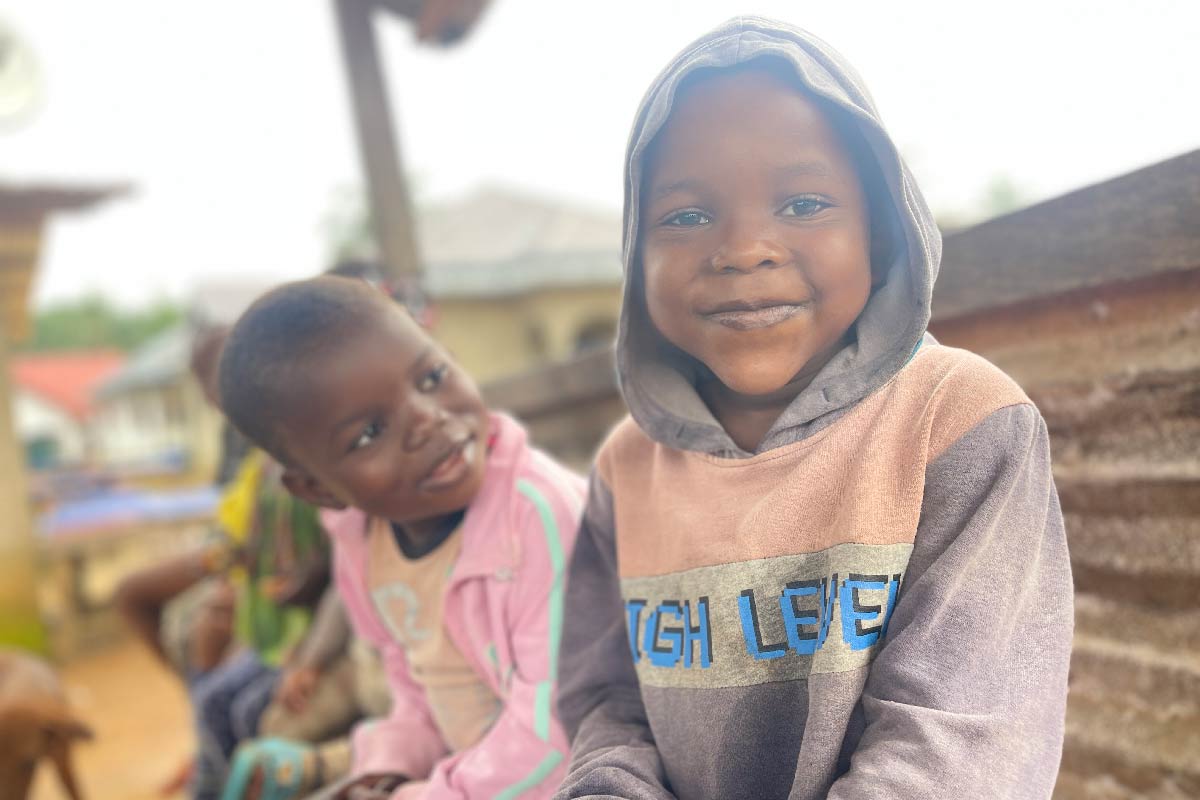
Trust deficits: a hurdle, not a blockade
Recent observations, questionnaires, and focus group discussions conducted by the Cameroon Baptist Convention Health Services (CBCHS) Immunisation Programme revealed that vaccine hesitancy is a complex issue arising from distrust of government-led services in the troubled regions; scepticism towards public health workers due to fears they might be implementing a government agenda; concerns triggered by COVID-19; and doubts about the effectiveness of vaccines themselves.
Such doubts, in addition to the sporadic movement restrictions that armed groups impose, mean many children live without protection from vaccine-preventable diseases.
But even in conflict-stricken settings like this one, where trust in authority figures is at a low ebb, targeted communication can make the difference between vaccine acceptance and rejection – if, and only if, it gets heard.
In the absence of a functioning mass media, the Gavi-funded CBCHS Immunisation Programme has made use of pre-digital channels, including town criers, mobilisers, community and faith leaders, and bike riders.
Town criers: voices that carry trust
For decades, town criers have been the voice of community communication. Using bells, drums and megaphones, these reliable individuals broadcast messages in local languages that cut through silence, suspicion and other community divides, reaching households from dawn through late in the evening.
“The drums are a profound way of communicating within our community. Different sounds signify different things: death, celebration, or information,” explained a community leader in Nguti.
The CBCHS Immunisation Programme works with town criers to spread accurate information about vaccination sessions, where and when they will happen, who will lead them, and the other services that may be offered. Beyond mobilising attendance, town criers dispel myths, confirm vaccine safety and stress the importance of attaining full immunisation following the schedule.
“Our SBC and Communication team creates customised messages to address specific issues. Once we've tested and approved them, we pass them on through our District Officers to Town criers and other local communication networks for them to disseminate them to their communities,” explained Dr Epie Njume, Technical Coordinator for the CBCHS Immunisation Programme.
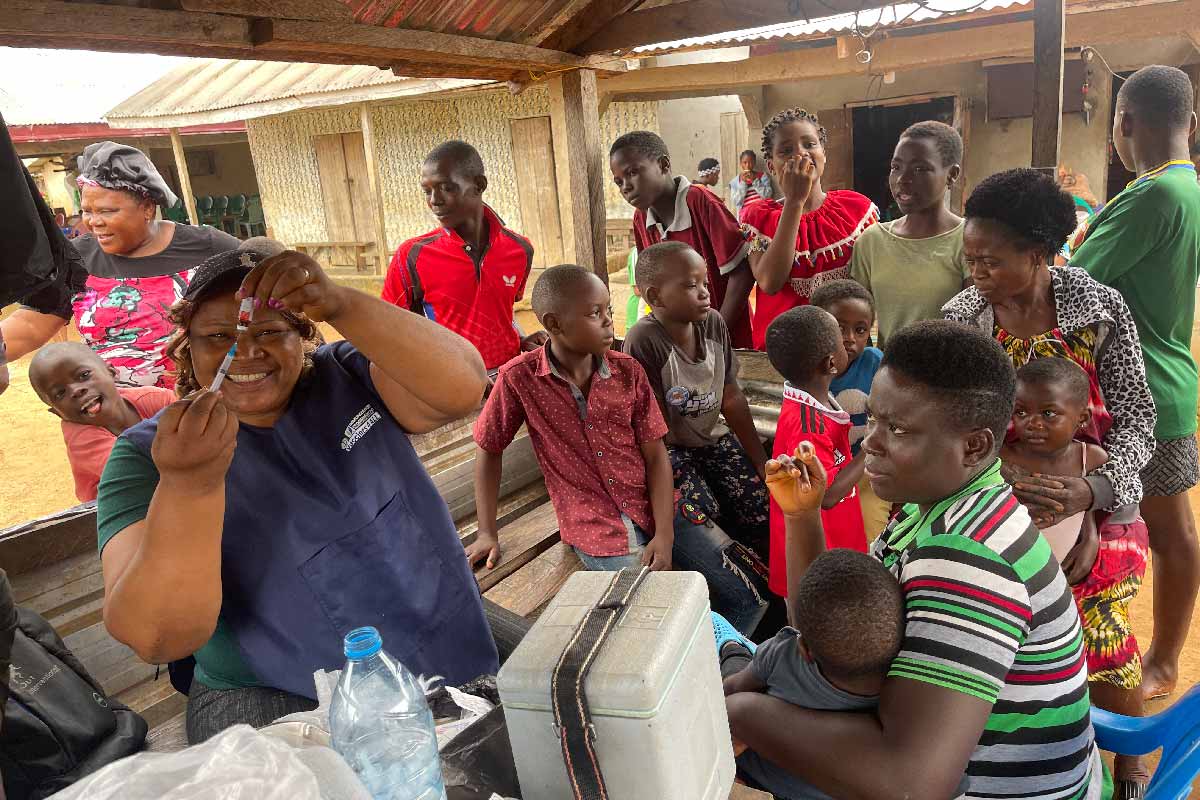
Mobilisers: ties to the grassroots
CBCHS selects community mobilisers based on their community ties, and the levels of access and credibility that they have, which can permit them to reach households with personalised and relevant messages.
Their role extends beyond merely sharing information: they create safe spaces for caregivers to voice fears, ask questions, and understand the benefits of vaccines in their daily lives. Having a two-way communications channel at grassroots level equips the CBCHS Immunisation Programme with real-time insights into community challenges, and can allow swift course adaptations, like addressing rumours before they spread.
Community and faith leaders
To reinforce messaging, CBCHS engages religious leaders, women’s association leaders, and traditional authorities whose voices carry moral and cultural weight in the communities. These leaders weave immunisation messages into sermons, group meetings and other community dialogues.
“I am one of the leaders trained by the CBCHS Immunisation Programme, so I understand the importance of vaccination and can talk about it freely and with confidence with the members of my community,” shared Acha Joseph, a faith leader in Batibo HD.
Since February 2025, CBCHS has documented over 4,350 consultative and collaborative engagements with stakeholders to co-create tailored immunisation service delivery in these diverse communities. They play a vital role in building trust, negotiating access and ensuring that even in communities where vaccine hesitancy is widespread, children are vaccinated.
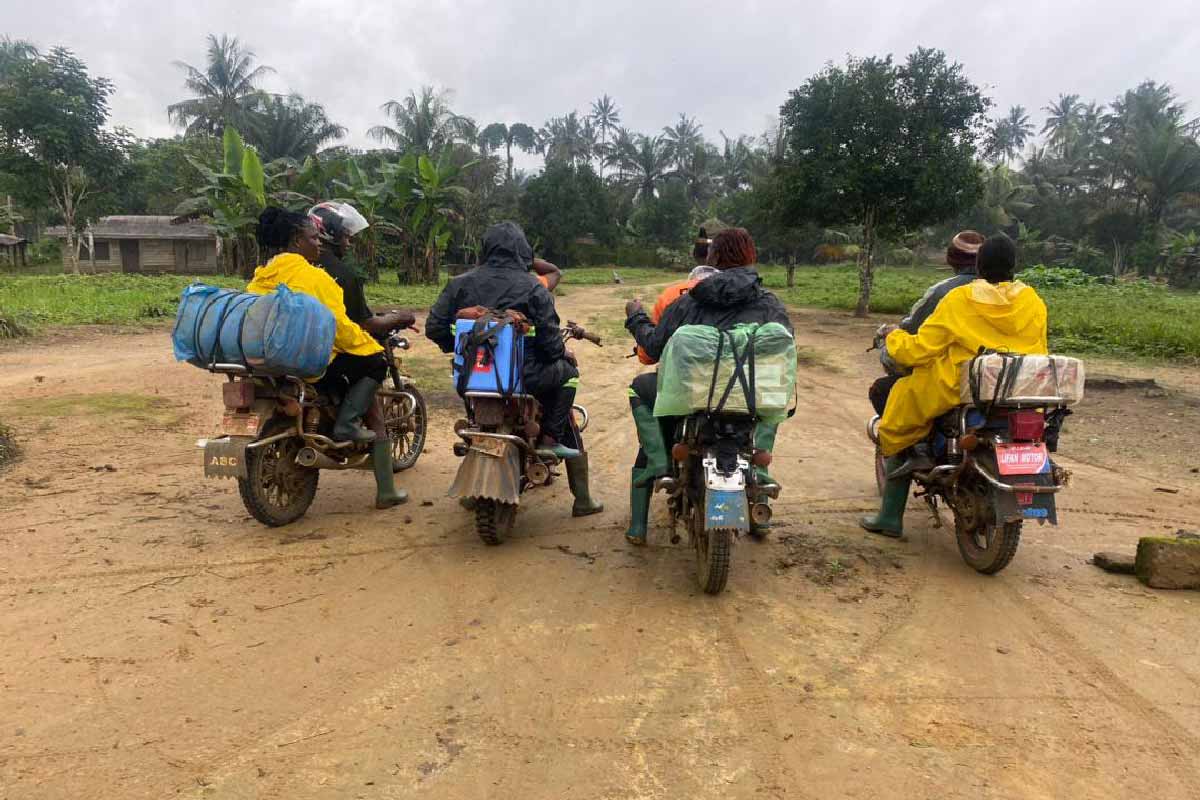
Bike riders: negotiating access and delivering messages
This is an area characterised by persistent insecurity. Where roads are blocked and telecommunications networks fail, agile bike riders have joined those championing immunisation in underserved communities. They carry messages, feedback and vaccine supplies across rough terrain and past volatile checkpoints, ensuring the communication chain does not break.
“We rely on bike riders to transport information to mobilisers and bring feedback back to us to help us strategise accordingly,” explained Epey Margrete, CBCHS District Officer for Ekondo-titi.
Have you read?
Tackling myths, restoring trust, and safeguarding children
The layered communication system involving town criers, mobilisers, community leaders and bike riders directly engages caregivers, and has proven to be more than an information pipeline. Rather, it’s a lifeline: rebuilding trust and changing behaviours where scepticism is widespread.
This communication involves negotiating access, dispelling rumours with trusted voices, and tailoring content to fit cultural and contextual realities. By integrating education on the importance of vaccines into every channel, be it through a town crier’s drum, a preacher’s sermon, or a mobilisation’s conversation, CBCHS’s Immunisation Programme enhances caregivers’ confidence and ensures the continuity of care to make sure vaccines are accepted at the last mile in the most underserved communities.
How is Gavi supporting CBCHS?
Gavi’s Humanitarian Partnerships Programme funds partner organisations with specific expertise in navigating humanitarian crises. The aim? To deliver all scheduled vaccine doses to children from birth to age five, in communities where conflict impedes access to government-provided health services.
CBCHS, operating in troubled parts of Northwest and Southwest Cameroon, is one such specialist organisation.
Between December 2022 and July 2025, ZIP Cameroon provided more than 53.000 children growing up in crisis zones with their very first vaccine.
Delphine Fri Chifor is a writer and has worked as a consultant with the CBCHS.
